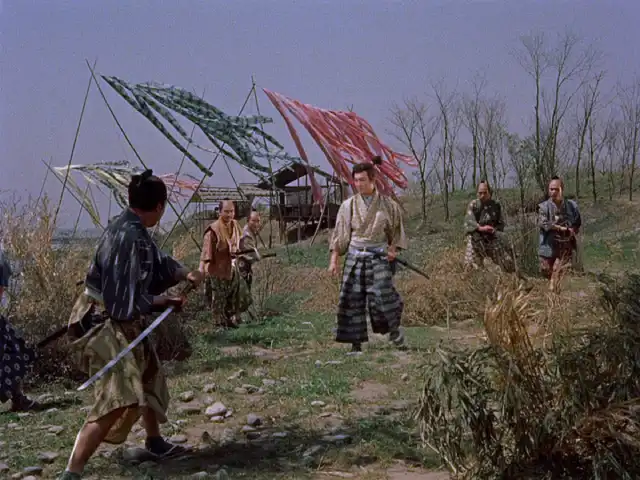
Duel at Ichijoji Temple (Hepburn: Zoku Miyamoto Musashi: Ichijōji no Kettō) is a 1955 Japanese film directed by Hiroshi Inagaki and starring Toshiro Mifune. Filmed in Eastmancolor, it is the second installment in Inagaki's Samurai Trilogy.
The movie is based on Eiji Yoshikawa's novel Musashi, which was originally serialized in the Asahi Shimbun newspaper between 1935 and 1939. The novel is a fictionalized account of the life of the legendary swordsman, Miyamoto Musashi.
The Samurai Trilogy begins with Samurai I: Musashi Miyamoto (1954) and concludes with Samurai III: Duel at Ganryu Island (1956). The film’s production was led by Kisaku Itō as the production designer, with set decoration by Makoto Sono and art consultancy by Kisaku Itō. Chōshichirō Mikami served as the sound technician, Shigeru Mori as the lighting technician, and choreography was managed by Tokuho Azuma and Yoshio Sugino.
In this chapter, Musashi embarks on a journey of self-discovery, traversing mountains, seashores, and farm fields. Seeking wisdom and striving to shape his character as a true samurai, he encounters various individuals and challenges. After engaging in a tense duel with the skilled Shisido Baiken, Musashi is chastised by an old man who questions his chivalry and mental composure, suggesting he has yet to become a true samurai.
As the story unfolds, Musashi is joined by Jotaro, an orphan boy, as they travel to Kyoto. In Kyoto, Otsu, a woman who still longs for Musashi, crosses paths with Akemi, who also yearns for a certain man. Meanwhile, Musashi challenges the Yoshioka school, defeating several students and demanding a match with their master, Seijuro Yoshioka. However, a series of events lead to an ambush planned against Musashi.
The film explores various subplots, including the tragic experiences of Akemi, who is mistreated and later raped by Seijuro. Musashi, meanwhile, remains focused on his path, even as he encounters Sasaki Kojiro, a formidable swordsman who introduces himself after intervening in one of Musashi's battles.
Musashi’s journey continues as he faces numerous challenges, including a duel with Seijuro Yoshioka at Ichijoji Temple, where he narrowly escapes an ambush. The film culminates with Musashi’s emotional struggle, as he attempts to reconcile his feelings for Otsu while remaining committed to his path as a samurai.
Ultimately, Musashi renounces his love for women, determined to focus solely on his journey as a swordsman. As the film concludes, Sasaki Kojiro watches Musashi walk alone, wishing him luck in his future endeavors.
See also
-
Tatara Samurai
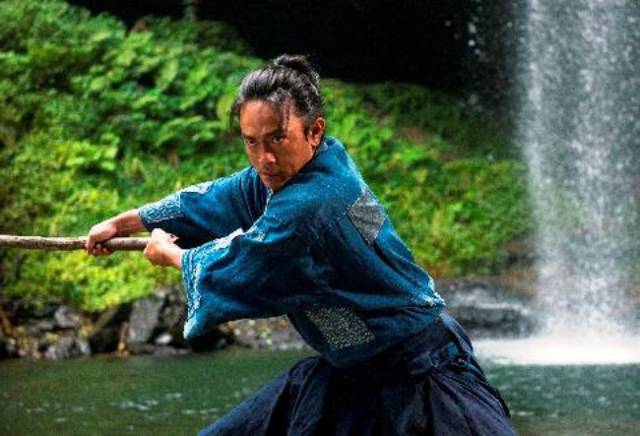
One day, bandits raid the quiet Tatara village, renowned for its steelworks and sword craftsmanship. Despite the arrival of samurai to protect the villagers, young Gosuke's mother is tragically killed while fleeing with him.
-
Samurai Fiction
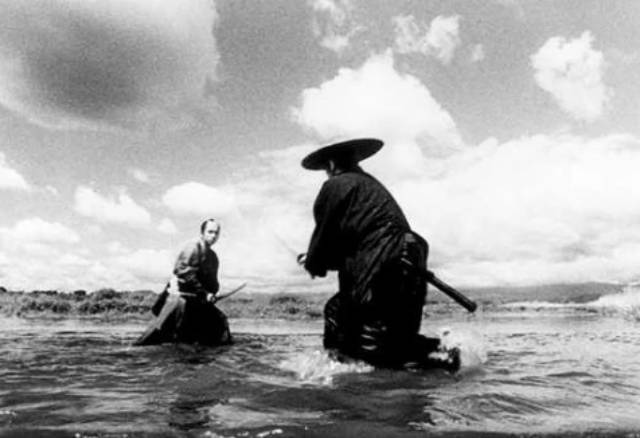
Samurai Fiction is a 1998 samurai-comedy film directed by Hiroyuki Nakano. The movie stands out for being filmed almost entirely in black-and-white, paying homage to classic jidaigeki samurai films. However, what sets it apart from its inspirations, including the works of Akira Kurosawa, is its modern twist, notably Tomoyasu Hotei's rock-and-roll soundtrack. A loose spinoff, Red Shadow, was released in 2001.
-
Rurouni Kenshin
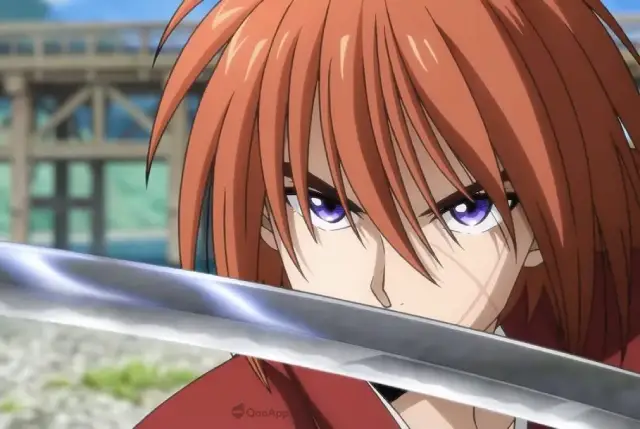
Rurouni Kenshin: Meiji Swordsman Romantic Story (Japanese: Hepburn: Rurōni Kenshin -Meiji Kenkaku Roman Tan-) is a Japanese manga series created by Nobuhiro Watsuki. Set in 1878, during the 11th year of the Meiji era in Japan, the story follows a former assassin known as Hitokiri Battosai. After his role in the turbulent Bakumatsu period, he adopts the identity of Himura Kenshin, a wandering swordsman who vows never to kill again. He dedicates his life to protecting the people of Japan. Watsuki crafted this series with the intent to create a unique shōnen manga, distinguishing it with a protagonist who is a former assassin and a narrative that becomes increasingly serious as it progresses.
-
Samurai Spy
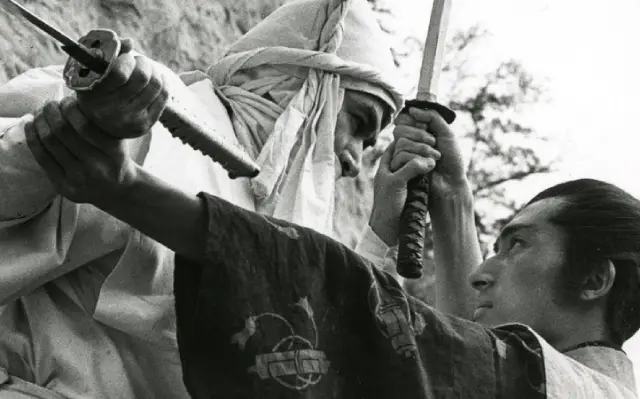
Samurai Spy (Ibun Sarutobi Sasuke), also known as Spy Hunter, is a 1965 film directed by Masahiro Shinoda, adapted from a novel by Koji Nakada. The film follows the legendary ninja Sasuke Sarutobi as he hunts the elusive spy Nojiri, while a shadowy figure named Sakon leads a group of men with their own designs on Nojiri. As the pursuit unfolds, the lines between allies and enemies blur, leaving everyone unsure of each other's true allegiance. Created during the height of the Cold War, the movie reflects the complexities and shifting loyalties of spies caught in the power struggles of their era.
-
Samurai III: Duel at Ganryu Island
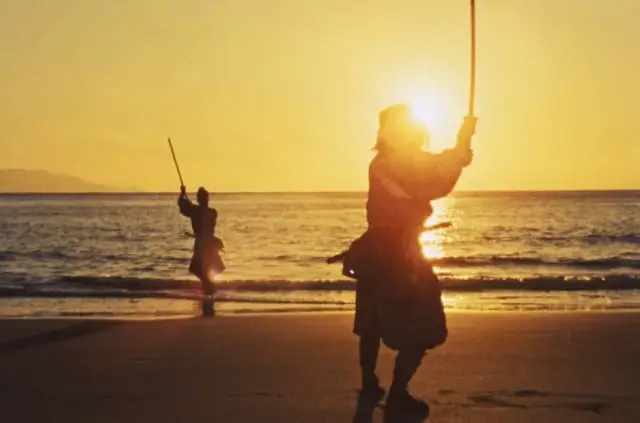
Samurai III: Duel at Ganryu Island (Japanese: Hepburn: Miyamoto Musashi Kanketsuhen: Ketto Ganryūjima) is a 1956 Japanese film directed by Hiroshi Inagaki and starring Toshiro Mifune. Filmed in Eastmancolor, it serves as the concluding chapter of Inagaki's Samurai Trilogy.
-
Samurai Marathon
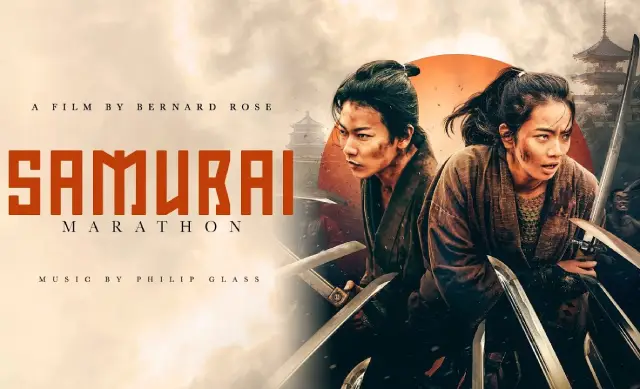
The producing team behind Takashi Miike's "13 Assassins," Jeremy Thomas and Toshiaki Nakazawa, reunite for another visually striking and action-packed samurai film. Based on a novel by Akihiro Dobashi, this film may not reach the same heights of relentless carnage or critical acclaim as its predecessor, but it still offers an exciting and occasionally humorous addition to the samurai genre, likely to resonate with festival audiences. This story of a literal running battle between rival samurai factions could see moderate success in theaters, though it may require more marketing effort without the ultra-violent appeal that made "13 Assassins" memorable.
-
The Samurai I Loved (Semishigure)
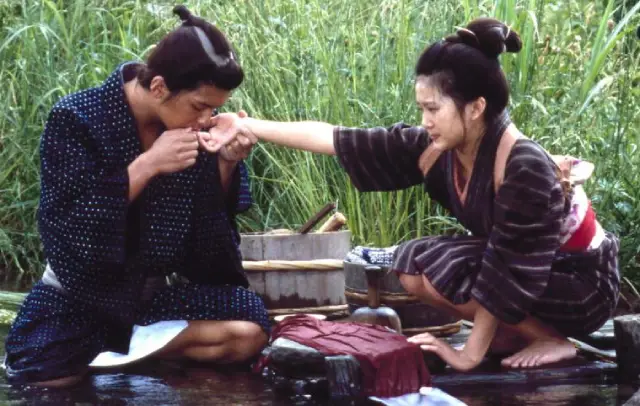
The costumes, settings, and script of The Samurai I Loved immediately transport samurai film enthusiasts back to the golden era of classic black-and-white samurai masterpieces.
-
Samurai Wolf (Kiba Okaminosuke)
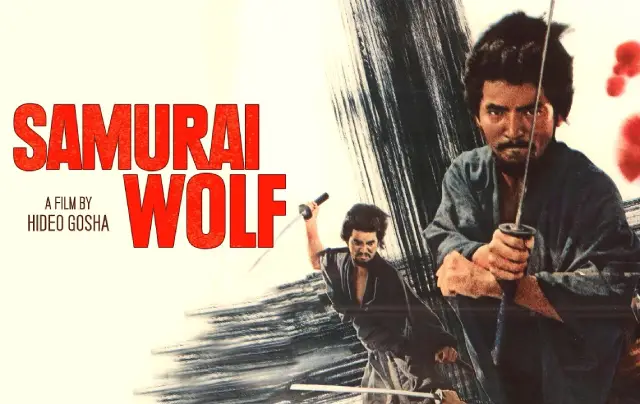
Hideo Gosha’s Samurai Wolf (Kiba Okaminosuke) is a gritty, hard-edged, and bloody reimagining of the traditional chambara film—a genre of action-oriented, historical sword-fighting movies that enjoyed widespread popularity in Japan throughout the 1950s but had begun to decline by the mid-1960s. Gosha had already established his reputation in this genre with films such as his debut feature, Three Outlaw Samurai (Sanbiki no samurai, 1964), a prequel to a popular television series, and Sword of the Beast (Kedamono no ken, 1965). These works established Gosha as a renegade artist unafraid to break conventions, a reputation that Samurai Wolf only cemented.

